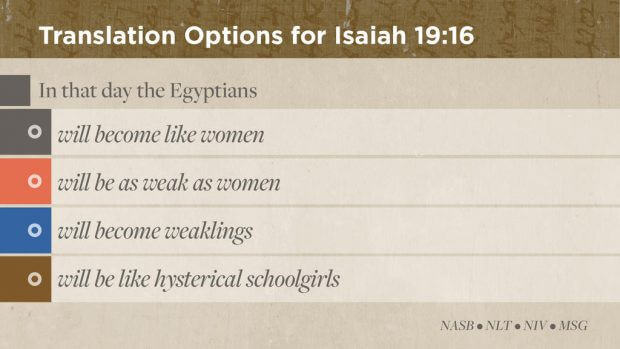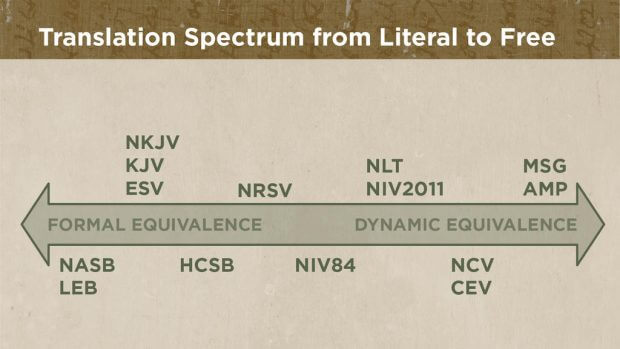Textual criticism can explain some of the differences people notice between their English translations, such as the omission of “who walk not after the flesh, but after the Spirit” in the NIV of Romans 8:1 (compare Romans 8:1 in the KJV).
However, many variations in translations are not text critical in nature; instead, they reflect the translation techniques and the decisions of translation committees.
Understanding the differences between text-critical issues and translation issues is an important first step in the study of textual criticism because it helps explain why translations differ and determine when textual criticism will not be helpful.
What is textual criticism?
Textual criticism is not a translation technique
Before a single word of the biblical text is translated, the translation committee, denomination, or other group commissioning the translation decides what their translation philosophy will be. Do they want to produce a “literal” translation, a paraphrase, or something in between? Many variables factor into the translation philosophy, but in general, translators must decide whether they want to preserve the form of the original as closely as possible or the meaning of the original as the translator understands it. Consider the following translations of Isaiah 19:16:
The differences between these translations of the same Hebrew words illustrate the difficulty of reproducing one language in a second language. It is impossible to reproduce languages exactly because the grammar and syntax of each language is different. The rules of the source language—Greek and Hebrew, in the case of the Bible—differ from the rules of English, the target language. Since each language has its own rules, translation requires adapting the rules of the source language to fit into the rules of the target language.
Translation committees decide whether they want to represent in English every word in the Greek or Hebrew, or whether they want to represent in English the meaning of the Greek or Hebrew text.
The first option results in what is usually called a “word-for-word” translation or a “literal” translation (though both are impossible). These are also called “formal” translations or “formally equivalent” because they try to translate every form in the source language into forms in the target language. English translations that strive for a word-for-word translation include the LEB, NASB, KJV, and ESV.
The second option results in a “thought-for-thought” translation, also called a “functional” or “dynamically equivalent” translation. Translators try to represent the meaning of every Greek or Hebrew word in a style that reflects proper, readable English. Their goal is to “produce the same effect on readers today that the original produced on its readers.” English translations that prefer dynamic equivalence include the NIV, NLT, CEV, and NCV.
A third mode of translation adds explanatory words or phrases that are not in the original text. These are better called “paraphrases” (literally, “phrases alongside”) because the additions are neither in the original text nor necessary to communicate the meaning of the original text: “they tend to explain rather than translate.” In this method, the translator tries to give the text fresh impact for contemporary readers. Popular English paraphrases include the AMP and MSG.
These translation techniques fall along a spectrum between “highly literal” and “highly paraphrastic.” According to NT scholar David Black, most important differences in English translations can be accounted for by the translation technique a committee adopts.
Textual criticism is not making interpretive translation decisions
Having decided which translation technique to use, a translation committee will make dozens of decisions about what particular passages mean when the grammar or syntax of the source language is ambiguous. Consider the following translations of 1 Timothy 3:6, a verse identifying qualifications for an overseer:
The highlighted phrases translate the Greek clause εἰς κρίμα ἐμπέσῃ τοῦ διαβόλου (eis krima empesē tou diabolou), which literally translates as “into the condemnation he fall of the devil.” The rest of the verse clearly indicates that new converts are at risk of falling (ἐμπέσῃ, empesē), but where they might fall is less clear: “into the condemnation of the devil.” In Greek, as in English, this expression could mean the condemnation caused by the devil (NLT) or received by the devil (NASB, NIV). Many translations make an interpretative decision (e.g., NLT, NASB, NIV), while others leave the reader responsible for sorting out (or ignoring) the ambiguity (KJV, NRSV). Sometimes the proper interpretation is clear from the context, but often translation committees must make interpretative decisions.
Both of the issues described above—translation technique and ambiguous language—are important factors in explaining why translations vary. But they are translation issues, not textual issues. That is, they are not concerned with the quality of the manuscripts used; they are concerned only with translating a particular manuscript into another language. In an analogy from the world of education, teachers are translators. Using textbooks and other resources, they try to find the best possible way to translate the information to their students. The teachers’ primary concern is not verifying the validity of the material in their resources; their concern is presenting the material in a clear way. On the other hand, scientists, linguists, mathematicians, and historians are continually adjusting and updating the information in textbooks as better information becomes available: Their primary concern is the text. This analogy breaks down quickly since such scholars are dealing with broad fields of research and not one sacred preserved book. However, by way of general comparison, teachers are translators, and scholars are text critics.1
***
This excerpt answering the question: What is textual criticism? is adapted from Textual Criticism of the Bible by Amy Anderson and Wendy Widder.
- Amy Anderson and Wendy Widder, Textual Criticism of the Bible, ed. Douglas Mangum, Revised Edition, vol. 1, Lexham Methods Series (Bellingham, WA: Lexham Press, 2018).








